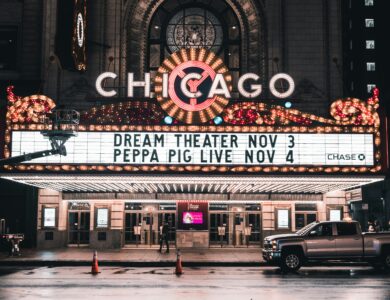
Bollywood isn’t just an industry in India; it’s a way of life. From the glitzy premieres to the iconic dialogues that become part of everyday conversation, Bollywood movies have a profound impact on Indian culture. It’s fascinating how these films shape, reflect, and sometimes challenge societal norms. One of the most influential aspects of Bollywood is its stars, the Bollywood Actors who are often worshipped like gods. Let’s dive into how Bollywood movies influence Indian culture.
1. Fashion Trends
Bollywood movies are a significant trendsetter when it comes to fashion in India. Whatever the Bollywood Actors wear on-screen often becomes the latest fashion craze. From Madhubala’s Anarkali suits in “Mughal-e-Azam” to Deepika Padukone’s sarees in “Chennai Express,” these fashion choices become must-haves for the public.
Traditional Wear: Bollywood has played a crucial role in keeping traditional Indian attire relevant. Movies frequently showcase beautiful sarees, lehengas, and sherwanis, which not only maintain the cultural heritage but also make these outfits trendy. For instance, after “Kabhi Khushi Kabhie Gham,” Kareena Kapoor’s character, Poo, made designer lehengas incredibly popular among young women.
Western Influence: On the flip side, Bollywood has also embraced Western fashion, blending it seamlessly with Indian styles. This fusion fashion is now a staple in urban India, thanks to movies like “Dhoom 2,” where Hrithik Roshan and Aishwarya Rai showcased some bold, stylish outfits.
2. Language and Slang
The language used in Bollywood movies often finds its way into everyday speech. The Bollywood Actors‘ dialogues become catchphrases that people use in their daily interactions, and the impact of these movies on the Hindi language is undeniable.
Catchphrases: Iconic dialogues like “Kitne aadmi the?” from “Sholay” or “Mogambo khush hua” from “Mr. India” have become part of the cultural lexicon. People often quote these lines, adding a bit of cinematic drama to their conversations.
Slang: Bollywood movies also introduce and popularize new slang words and phrases. Movies like “Gully Boy” brought street lingo like “Apna time aayega” into mainstream culture, influencing the way people, especially the youth, communicate.
3. Social Norms and Values
Bollywood movies often mirror societal norms and values, but they also have the power to challenge and change them. The Bollywood Actors and the roles they play can significantly influence public opinion and societal attitudes.
Gender Roles: Bollywood has played a role in both reinforcing and challenging traditional gender roles. Earlier movies often depicted women in submissive roles, but contemporary cinema is seeing a shift. Films like “Queen” and “Piku,” starring Kangana Ranaut and Deepika Padukone respectively, portray strong, independent women who defy traditional expectations.
Family Dynamics: The importance of family is a recurring theme in Bollywood movies. Films like “Hum Aapke Hain Koun” and “Kabhi Khushi Kabhie Gham” emphasize family values, respect for elders, and the importance of family unity. These movies reinforce the cultural significance of familial bonds in Indian society.
Social Issues: Bollywood has also been a platform to highlight and address various social issues. Movies like “Pink,” which deals with women’s consent and safety, or “Taare Zameen Par,” which focuses on dyslexia, bring important issues to the forefront and spark national conversations.
4. Music and Dance
Bollywood movies are incomplete without their music and dance sequences. The songs sung by playback singers and the dance moves of Bollywood Actors significantly impact Indian culture.
Music: Bollywood music spans various genres, from classical to contemporary. Songs from movies often top the music charts and become anthems for various occasions. For instance, songs like “Jai Ho” from “Slumdog Millionaire” and “Kala Chashma” from “Baar Baar Dekho” have become party staples.
Dance: Bollywood has popularized many dance styles, including classical Indian dance forms and more modern, Western-inspired choreography. The energetic dance numbers, often performed by Bollywood Actors, inspire fans to learn and perform these dances at social gatherings and celebrations. Choreographers like Saroj Khan and Prabhu Deva have become household names thanks to their work in Bollywood.
Conclusion
In conclusion, the influence of Bollywood on Indian culture is immense and multifaceted. From fashion trends to language, social norms, and music, Bollywood movies shape and reflect Indian society in profound ways. The Bollywood Actors are central to this influence, as their on-screen portrayals and off-screen personas greatly impact their fans. As Bollywood continues to evolve, its cultural impact will undoubtedly persist, weaving itself further into the fabric of Indian life. Whether through setting fashion trends, popularizing slang, challenging social norms, or introducing new music and dance styles, Bollywood’s impact on Indian culture is both significant and enduring.




